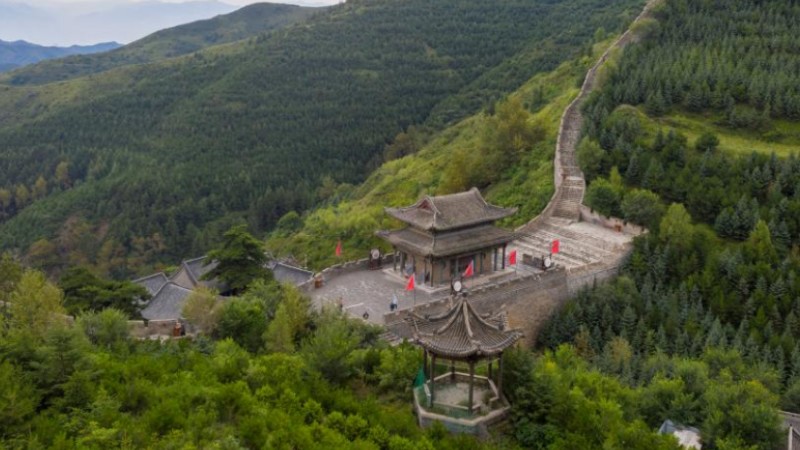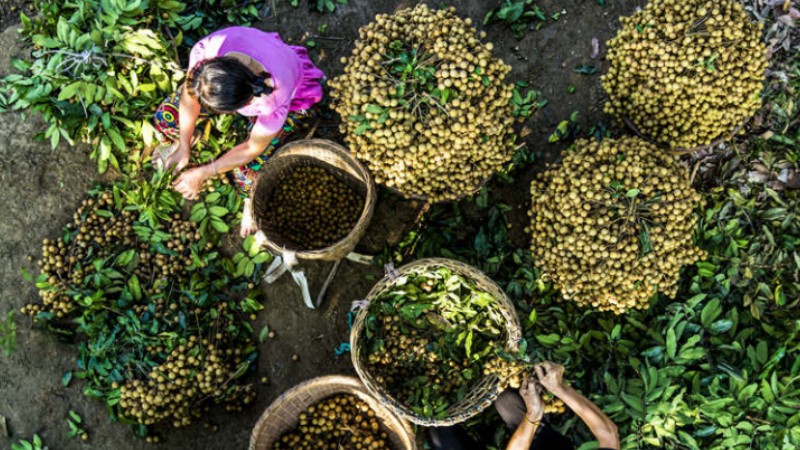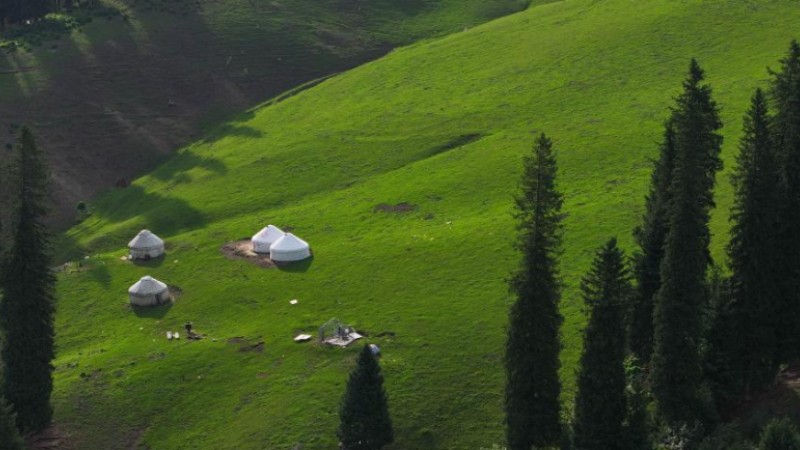Wondrous Xinjiang: Snapshots of Xinjiang's iconic Grand Bazaar
URUMQI, Sept. 1 (Xinhua) -- As the alleyways slowly awaken from slumber in the early morning, Ablet Abdushukur hurried to his musical instrument store at the renowned Xinjiang International Grand Bazaar in Urumqi, gearing up for another busy day.
By 9:30 a.m., the doors of the bazaar sprang open, transforming the pedestrian street into a lively canvas of tourists taking selfies and posing for group photos.
Seated in his shop, Ablet Abdushukur picked up a brightly colored hand drum, playing cheerful beats while beckoning passersby.
The term "bazaar" translates to "market" in Uygur. As a local landmark in Urumqi, the capital of northwest China's Xinjiang Uygur Autonomous Region, the grand bazaar sprawls across 100,000 square meters, hosting over 3,000 shops.
It stands as a captivating tourist attraction, featuring distinctive architecture, folk customs and delectable cuisine. The current peak season sees over 100,000 visitors flocking here every day.
"Xinjiang is truly wonderful. Its cultural tapestry is rich and diverse," said Zheng Ying, a tourist from east China's Jiangxi Province who is on a 20-day trip to the region.
The bazaar's charm takes center stage as the day progresses. Around noon, the mingled scents of roasted whole lamb and melons permeate the air, as tourists are enthralled by songs and dances, along with a variety of ethnic handicrafts.
Amidst all the hustle and bustle, Pakistani merchant Akhtar Hussain and his wife, who own a shop here, began their livestreaming session.
"Our shop features handcrafted goods from Pakistan, India, Türkiye and Iran. Our products have found their way to every corner of China, propelled by soaring sales," said Hussain, who boasts over a decade of trading experience at this bazaar.
In front of a traditional log cabin, tourists donning ethnic costumes gathered for photo sessions. Inside, a diverse collection of handicrafts, including embroidery and felt creations, enraptured many.
"In previous years, the tourist peak season would commence in the summer, but this year it started early in April," said Lin Xiaorong, who is in charge of the wooden house.
Lin added that the cultural and creative products hold particular allure, with daily sales exceeding 10,000 yuan (about 1,378 U.S. dollars).
Bazaars are a common sight in Xinjiang, found throughout urban and rural areas in Urumqi, Kashgar, and Turpan, among others. They serve as a reflection of the region's economic vitality.
In the first half of 2023, the gross domestic product of Xinjiang totaled over 854.2 billion yuan, up 5.1 percent year on year.
As dusk approached, gourmands began indulging in the culinary avenue of the grand bazaar, enamored by an array of delights, ranging from kebabs and grilled fish to yogurt rice dumplings and milk tea.
Abdulm Abdurahman, who owns an eatery, was fully engaged in preparing his specialty dish, deftly grilling the fish for a long queue of eager customers. "We sell nearly 300 fish daily. Although busy, it's very gratifying," he said.
As the clock struck 11 p.m., the night charm of the bazaar burst forth with vibrancy. Enveloped in a gentle breeze, people swayed to joyous music beneath the towering vantage point.
Hassan Shah, a Pakistani businessman, joined the crowd to shake a leg. "People are so warm-hearted. I really love it here," he said.
This year, the Xinjiang International Grand Bazaar has unveiled a range of activities involving intangible cultural heritage and cultural performances, which have been well received by visitors, said Liu Bo, an official with the grand bazaar subdistrict.
"A batch of new stores is poised for debut, ensuring that the bazaar remains a source of excitement for tourists," Liu added.
Photos
Related Stories
- Xinjiang's Kunjirap Pass records over 21,000 inbound and outbound passengers this year
- Aerial view along Duku Highway in China's Xinjiang
- Herdsmen busy preparing winter forage for livestock in Xinjiang
- Scientists dedicated to decoding desert evolution in Xinjiang
- Grand Bazaar in Urumqi: a mirror of vitality of local economy
Copyright © 2023 People's Daily Online. All Rights Reserved.









